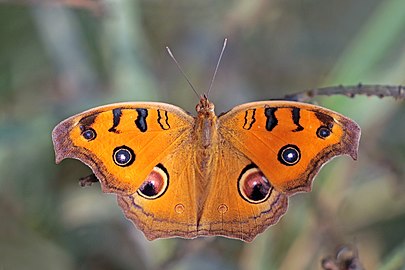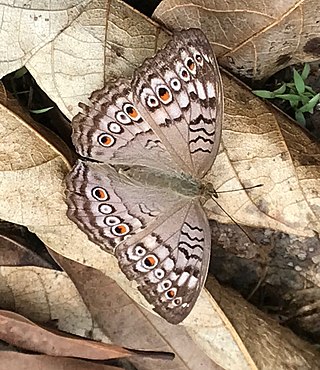
Junonia atlites, the grey pansy, is a species of nymphalid butterfly found in South Asia.

Dodona durga, the common Punch, is a small but striking butterfly found in the Indomalayan realm that belongs to the Punches and Judies, that is, the family Riodinidae.

Dodona dipoea, the lesser Punch, is a small but striking butterfly found in the Indomalayan realm that belongs to the Punches and Judies, that is, the family Riodinidae.
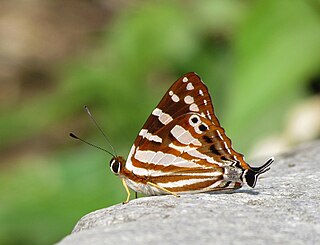
Dodona egeon, the orange Punch, is a small but striking butterfly found in the Indomalayan realm - in Mussoorie to Assam, Burma (nominate) and Peninsular Malaya that belongs to the family Riodinidae.

Charaxes marmax, the yellow rajah, is a butterfly found in India that belongs to the rajahs and nawabs group, that is, the Charaxinae group of the brush-footed butterflies family.

Mycalesis perseus, the dingy bushbrown or common bushbrown, is a species of satyrine butterfly found in south Asia and southeast Asia.

Junonia hierta, the yellow pansy, is a species of nymphalid butterfly found in the Palaeotropics. It is usually seen in open scrub and grassland habitats.

Mycalesis mineus, the dark-brand bush brown, is a species of satyrine butterfly found in Asia.
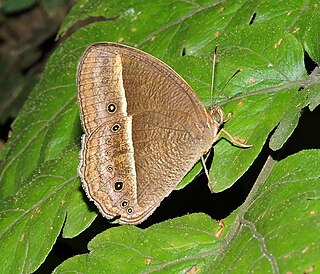
Mycalesis nicotia, the brighteye bushbrown, is a species of satyrine butterfly found in Asia.
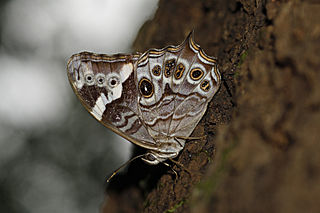
Lethe rohria, the common treebrown, is a species of satyrine butterfly found in Asia.
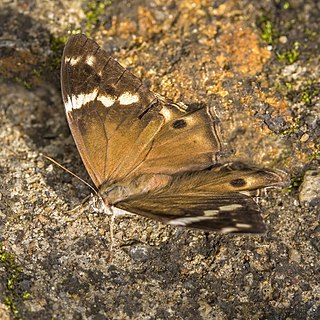
Lethe drypetis, the Tamil treebrown, is a species of Satyrinae butterfly found in south India and Sri Lanka.

Vindula erota, the common cruiser, is a species of nymphalid butterfly found in forested areas of tropical South Asia and Southeast Asia.

The Indian fritillary is a species of butterfly of the nymphalid or brush-footed family. It is usually found from south and southeast Asia to Australia.

Stichophthalma nourmahal, is a South Asian butterfly that belongs to the Morphinae subfamily of the brush-footed butterflies family.

Enispe cycnus, the blue caliph, is a species of nymphalid butterfly found in Southeast Asia.

Lasiommata schakra, the common wall, is a species of satyrine butterfly found in South Asia.

Vagrans is monotypic genus with the species vagrant a species of nymphalid butterfly found in forested areas of tropical South Asia and Southeast Asia.

Catochrysops strabo, the forget-me-not, is a small butterfly found in Asia that belongs to the lycaenids or blues family. The species was first described by Johan Christian Fabricius in 1793. It is found in Sri Lanka, India, from Sikkim to Indochina and in Sundaland, Sulawesi and the Philippines.

Junonia orithya is a nymphalid butterfly with many subspecies occurring from Africa, through southern and south-eastern Asia, and in Australia. In India, its common English name is the blue pansy, but in southern Africa it is known as the eyed pansy as the name blue pansy refers to Junonia oenone. In Australia, this butterfly is known as the blue argus, but this name also is used for the Aricia anteros in Europe.

Junonia iphita, the chocolate pansy or chocolate soldier, is a butterfly found in Asia.


